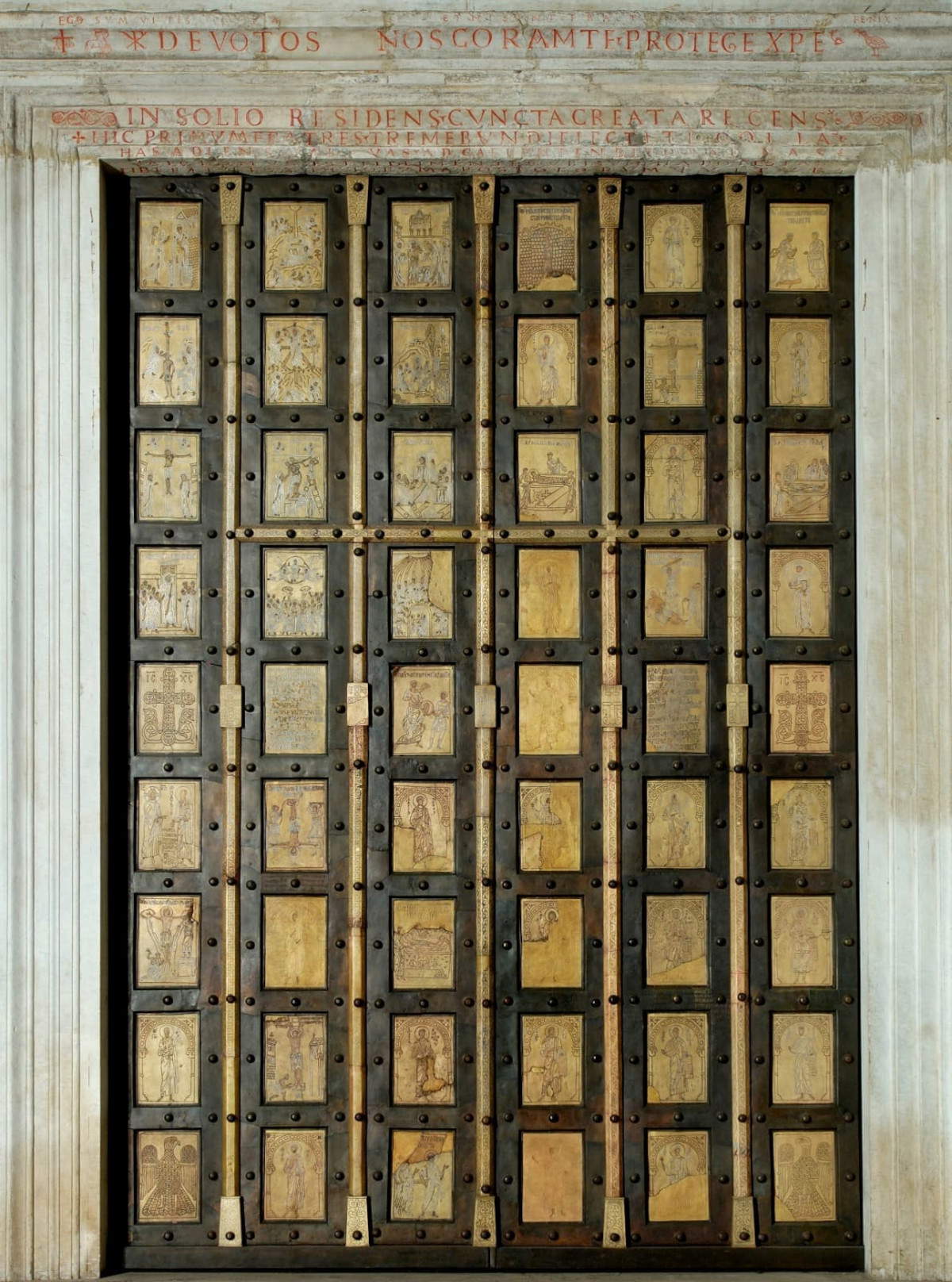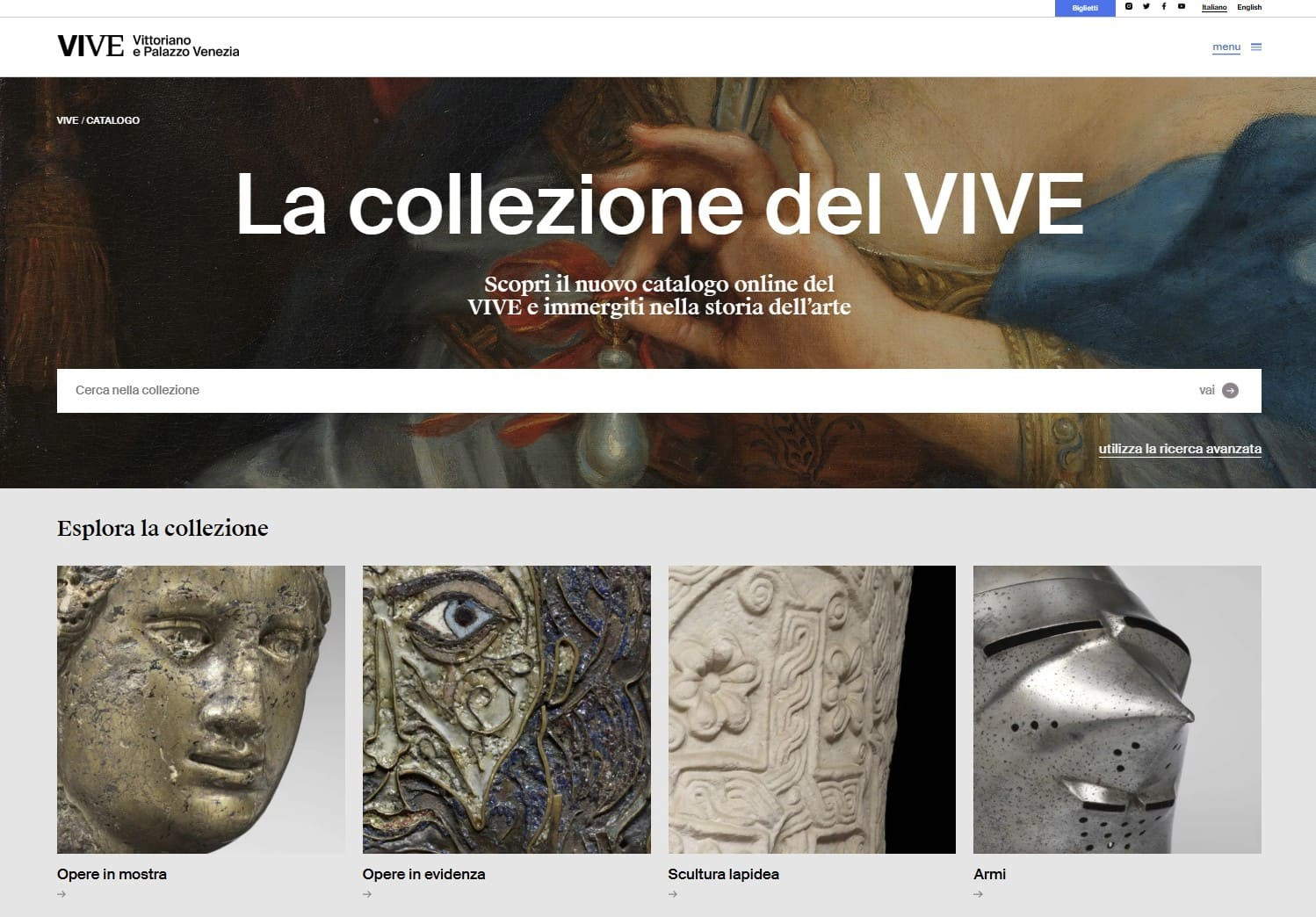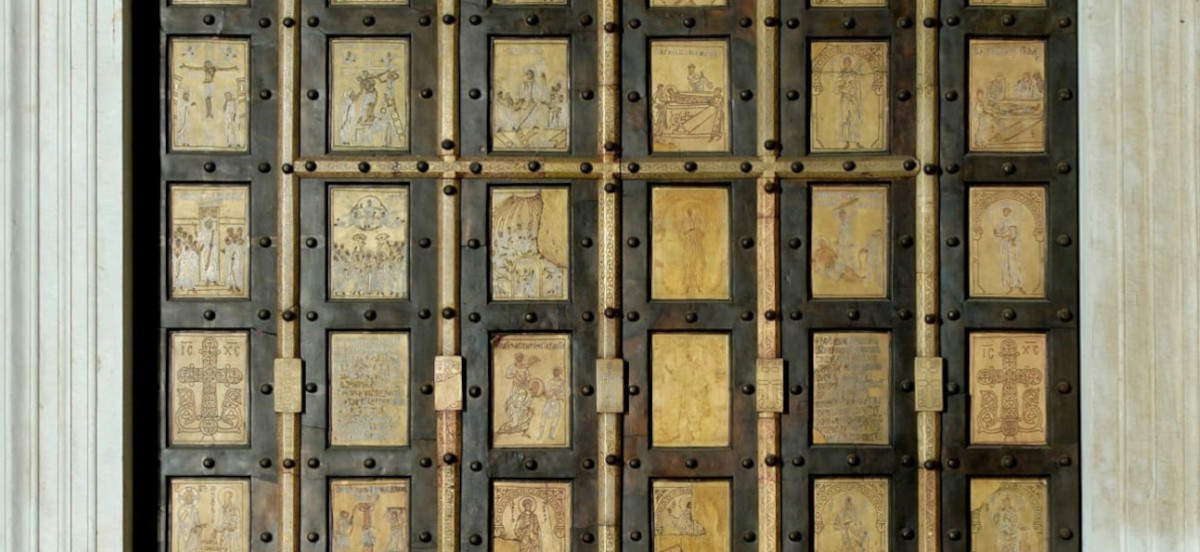From Feb. 13 to March 23, 2025, the fragment of the Byzantine door of the Basilica of St. Paul Outside the Walls, depicting a Pentecost scene, will be on public display for the first time in the Altoviti Hall of Palazzo Venezia in Rome. Miraculously escaped the fire that devastated the basilica on the Via Ostiense in 1823, the bronze door that still closes the Holy Door from the inside is part of the conspicuous group of bronze door knockers executed in Constantinople and intended to decorate some of the most significant monuments in central southern Italy. Executed in 1070 by Theodoros and Staurachios, commissioned by Pantaleon of Amalfi and Ildebrando of Soana, future Pope Gregory VII (1073-1085), the door consists of 54 panels depicting Stories from the Life of Christ, Prophets, Apostles with scenes of their martyrs. A fragment of the Pentecost scene is part of the collections of the Palace Museum in Venice.
The display of the fragment is part of the initiative Reintegrations. From the Depots to the Visiting Route, a series of meetings promoted by the VIVE - Vittoriano and Palazzo Venezia and curated by the institute’s director Edith Gabrielli to enhance the works kept in the deposits and reintegrate them into the museum itinerary, and to share with the public the results of the investigations conducted as part of the cataloguing campaign carried out by the VIVE-Vittoriano and Palazzo Venezia. On the occasion of each meeting, an exhibition of the work covered by the conference itself will be inaugurated at the Altoviti Hall. The initiative, made possible thanks to the work of the Institute’s art historian officials Veronica Dell’Agostino and Alessia Dessì, also allows direct knowledge of the work through consultation of the online catalog via a special QR code. In fact, the fragment of the Byzantine door was the subject of the first meeting held today, Feb. 13, at 6 p.m., titled From Constantinople to Rome: the bronze door of St. Paul Outside the Walls and the fragment in the Museum of the Palace of Venice, with Professor Alessandro Tomei.
The programming of the series of meetings will continue with additional works on public view for the first time: from Filarete’s medal depicting Faustina Maggiore and her nuptial pact with Emperor Antoninus Pius to Saturnino Gatti’s Madonna of the Walnut, from Gian Lorenzo Bernini’s model of the Fountain of the Four Rivers in Piazza Navona to Antonio Ximenes’ so-called Shield of Giuseppe Garibaldi.

The initiative is part of the massive project of systematic cataloging of the VIVE’s collections, including works kept in the repositories, promoted by the VIVE, directed by Edith Gabrielli and flowing into the creation of an online catalog on the website of the Institute itself (vive.cultura.gov.it). Cataloging was entrusted by VIVE to three working groups, engaged in a systematic and continuous study of the collections, coordinated by three academics: Alessandro Tomei, former Full Professor of Medieval Art History at the University “Gabriele d’Annunzio” of Chieti-Pescara, Barbara Agosti, Full Professor of Modern Art History at the University of Tor Vergata and Valerio Terraroli, Full Professor of History of Contemporary Art at the University of Verona, respectively for medieval, modern and contemporary art, in line with the heritage held by the Institute.
Launched in 2020, the cataloguing work included, in a first phase, the reconnaissance of the various and often dissimilar cataloguing already carried out in the past and the elaboration of a four-year program of work that would include, on the one hand, the updating of the existing cards and, on the other hand, the creation ex novo of the missing ones. This was followed by the definition of the features of the online catalog to be published on the VIVE website - from the card model of individual works to the search and filter functions - balancing the solutions proposed by leading national and international institutions with the specificities of the Institute’s heritage.
The catalog - now online with the first 94 works indexed for the Middle Ages - features 560 cards in Italian and English compiled by some eighty specialists, mostly young people, from major Italian and foreign research centers and universities. A multidisciplinary and highly specialized work that, thanks in part to the support of Silvia Armando and the Institute’s internal staff, has made it possible to thoroughly investigate the collections, returning a more complete and accurate reading of them, as well as dozens of discoveries and new dates and attributions. More than 2,200 photographic shots are in the catalog, the result of a careful reorganization of existing photographic materials-particularly digital ones-and the activation of a new ad hoc photographic campaign.
“The major cataloging project promoted by the VIVE is designed to promote the study and knowledge of the Institute’s collections and ensure their enjoyment by a wide and diverse public,” said Edith Gabrielli, Director of the VIVE-Vittoriano and Palazzo Venezia. “In line with the most important international museum realities and firmly convinced of the indispensable role of cataloguing for an optimal activity of protection and enhancement of our heritage, we have launched a massive intervention in this direction, assisted by three distinguished academics who have coordinated specialists from major Italian and foreign research centers and universities. The publication of the online catalog will enable scholars to carry out scientific research, deepening the study of the works of interest and discovering new attributions and dating, and tourists and the curious to get to know the most significant works also through the important photographic kit that accompanies the catalog. A significant commitment, towards the public and the scientific community, that has determined the critical re-evaluation of the VIVE’s collections by encouraging their rediscovery through new visiting routes.”

 |
| Rome, Palazzo Venezia shows for first time fragment of Byzantine door of St. Paul Outside the Walls |
Warning: the translation into English of the original Italian article was created using automatic tools. We undertake to review all articles, but we do not guarantee the total absence of inaccuracies in the translation due to the program. You can find the original by clicking on the ITA button. If you find any mistake,please contact us.